
Brexit: What the Hell Happens Now?: The Facts About Britain's Bitter Divorce From Europe 2016
by
Ian Dunt
Published 11 Apr 2017
It doesn’t really affect domestic law in other parts of society, like health or crime, but it tells firms what standards they have to produce to and forces countries to take those products, regardless of whether governments or companies want them. This recognition of standards reflects a key part of what makes trade work. It is something which presents one of the greatest dangers to Britain when it pulls away from Europe: non-tariff barriers. In recent years, as tariffs erode away, it is non-tariff barriers which preoccupy the thoughts of trade experts. Non-trade barriers are obstacles to trade outside of taxation. Some are insurmountable, like language. Others are not. Mutual recognition agreements are key to overcoming some of these problems. When two countries sign these agreements they acknowledge each other’s standards and paperwork on product testing and conformity in certain areas of their economy.
…
But this was not simply a plan for WTO rules. It was clear that Davis wanted to secure a trade agreement with the EU before leaving. In response to a question from Tory backbencher John Redwood on tariffs, he replied: ‘It is not just tariff barriers. We also have to negotiate non-tariff barriers. It is… in both Europe’s interest and our interest to have tariff-free and non-tariff barrier based trade. That is where the jobs are.’ Two days later, during prime minister’s questions, May said: ‘What we are going to do is be ambitious in our negotiations to negotiate the best deal for the British people – and that will include the maximum possible access to the European market for firms to trade with and operate within the European market.’
…
The scale of it is almost beyond comprehension, and experts – much derided during the campaign but highly sought after by Whitehall once the work had to be done – warn that it will probably take a decade or more to complete satisfactorily. Trade Brexit Should Britain stay in the single market, we will not need a trade deal. But if we do leave the single market we will need some sort of post-Brexit trading arrangement with the EU, or we will see the return of tariffs and non-tariff barriers to our largest market. People often assume that Article 50 covers administration, the law and trade. It actually only covers administration. The legal puzzle is Britain’s problem. Trade agreements – which come under the euphemism ‘future relationship’ – are something the EU member states are only expected to be ‘taking account of’.

The European Union
by
John Pinder
and
Simon Usherwood
Published 1 Jan 2001
The project was strongly backed by the more dynamic firms and the main business associations, especially since the Luxembourg ‘compromise’ had served to let non-tariff barriers to trade build up during the period. The successful abolition of tariffs on internal trade had demonstrated the value of a programme with a timetable. So the Commission produced a list of some 300 measures to be enacted by the end of 1992 in order to complete the single market by removing the non-tariff barriers. The Commissioner in charge of the project was Lord Cockfield, a former minister in the Thatcher government; and the programme was rapidly drafted in time to be presented to the European Council in Milan in June 1985. 5.
…
January 2013 John Pinder Simon Usherwood Abbreviations ACP African, Caribbean, Pacific countries AFSJ area of freedom, security, and justice ALDE Alliance of Liberals and Democrats for Europe Benelux Belgium, Netherlands, and Luxembourg BRIC Brazil, Russia, India, and China CAP common agricultural policy CFCs chlorofluorocarbons CFSP Common Foreign and Security Policy CIS Commonwealth of Independent States CJHA Cooperation in Justice and Home Affairs Comecon Council for Mutual Economic Assistance Coreper Committee of Permanent Representatives CSDP Common Security and Defence Policy EAGGF European Agricultural Guidance and Guarantee Fund EC European Community ECB European Central Bank ECJ European Court of Justice (formal title, Court of Justice) Ecofin Council of Economic and Finance Ministers Ecosoc Economic and Social Committee ECR European Conservatives and Reformists ECSC European Coal and Steel Community ecu European Currency Unit (forerunner of euro) EDC European Defence Community EDF European Development Fund EEA European Economic Area EEC European Economic Community EFA European Free Alliance EFD Europe of Freedom and Democracy EFSF European Financial Stability Fund Efta European Free Trade Association ELDR European Liberals, Democrats, and Reformists EMS European Monetary System Emu Economic and Monetary Union ENP European Neighbourhood Policy EPC European Political Cooperation EPP–ED European People’s Party and European Democrats ERDF European Regional Development Fund ERM Exchange Rate Mechanism ESCB European System of Central Banks ESDP European Security and Defence Policy ESF European Social Fund ESM European Stability Mechanism ETS Emissions Trading Scheme EU European Union Euratom European Atomic Energy Community Gatt General Agreement on Tariffs and Trade (forerunner of WTO) GDP Gross Domestic Product GNI Gross National Income GNP Gross National Product GSP Generalized System of Preferences GUE/NGL European United Left/Nordic Green Left IGC Intergovernmental Conference Ind Independent MEP Member of the European Parliament Nato North Atlantic Treaty Organization NTBs non-tariff barriers OECD Organization for Economic Cooperation and Development OLP Ordinary Legislative Procedure OMC Open method of coordination OSCE Organization for Security and Cooperation in Europe PES Party of European Socialists PHARE Poland and Hungary: aid for economic reconstruction (extended to other Central and East European countries) QMV qualified majority voting (in the Council) SEA Single European Act SGP Stability and Growth Pact TACIS Technical Assistance to the CIS TEC Treaty establishing the European Community TEU Treaty on European Union TFEU Treaty on the Functioning of the European Union TSCG Treaty on Stability, Coordination, and Governance in the Economic and Monetary Union UN United Nations UNFCCC UN Framework Convention on Climate Change VAT value-added tax WEU Western European Union WTO World Trade Organization List of boxes 1 The Treaties 2 Structural funds and objectives 3 States’ net budgetary payments or receipts 4 Employment policy 5 Cotonou Convention, 2000–2020 6 EU agreements and links in the Third World, other than Cotonou and ENP List of charts 1 The Union’s institutions 2 Number of MEPs from each state, 2014 3 Party groups in the Parliament in 2012 4 Institutions of economic and monetary policy 5 Share of budget spent on CAP, 1970–2010 6 Breakdown of budget expenditure, 2012 7 Sources of revenue, 2011 8 Shares of world trade of EU, US, China, Japan, and others, 2010 9 How the EU is represented for Common Foreign and Security Policy 10 Direction of EU trade in goods by region, 2010 11 Shares of official development aid from EU, US, Japan, and others, 2011 12 Development aid from EU and member states by destination, 2010 List of illustrations 1 Winston Churchill at The Hague Photo by Kurt Hutton/Picture Post/Hulton Archive/Getty Images 2 Jean Monnet and Robert Schuman © Robert Cohen/AGIP/Rue des Archives, Paris 3 The Schuman Declaration Fondation Jean Monnet pour l’Europe, Lausanne 4 Edward Heath signing the Treaty of Accession Photo by Douglas Miller/Keystone/Getty Images 5 Jacques Delors Credit © European Union, 2013 6 Altiero Spinelli voting for his Draft Treaty Photo: European Parliament 7 European Council, 1979 Photo by Keystone/Hulton Archive/Getty Images 8 Council of Ministers Credit © European Union, 2013 9 European Parliament in session Photo: European Parliament 10 The first meeting of the Commission with President José Manuel Barroso, 2004 Credit © European Union, 2013 11 Court of Justice sitting Credit © European Union, 2013 12 Euro notes and coins Banknotes draft design © EWI 13 Kohl and Mitterrand at Verdun © Bettmann/Corbis 14 The Berlin Wall comes down Photo © Richard Gardner 15 The G8 Summit at Camp David, May 2012 Credit © European Union, 2013 The publisher and the authors apologize for any errors or omissions in the above list.
…
But it has been harder to control governments than firms. The Commission has been able to enforce some difficult decisions on reluctant governments; but especially in the 1970s, after it had been weakened by de Gaulle and with the economies hard hit by recession, it could do little to stem the rising tide of subsidies. Along with the subsidies, non-tariff barriers proliferated in those years, becoming the main obstacle to trade between member states. One reason was technological progress, generating complex regulations differing from one state to another. More important was pressure for protection from those who were suffering from the prevailing ‘stagflation’.

Brexit Unfolded: How No One Got What They Want (And Why They Were Never Going To)
by
Chris Grey
Published 22 Jun 2021
fbclid=IwAR0RsJm881CRltt9vkOGIzlLmhmayHH_aY6lW_6YBJUK2q3WDFaGbMJkU1c 120 Adrian Zorzut, ‘Video resurfaces of Iain Duncan Smith trying to stop MPs scrutinising Brexit agreement he now wants rewritten’ New European 5 August 2020 https://www.theneweuropean.co.uk/brexit-news/video-of-ids-commons-speech-against-wa-scrutiny-found-on-85954 121 Michael Savage and Toby Helm, ‘Top lawyers slam Suella Braverman for wrecking UK’s reputation’ The Observer 12 September 2020 https://www.theguardian.com/politics/2020/sep/12/top-lawyers-slam-suella-braverman-for-wrecking-uks-reputation 122 Dr Brigid Fowler, ‘Parliament’s role in scrutinising the UK-EU Trade and Cooperation Agreement is a farce’ Hansard Society Blog 29 December 2020 https://www.hansardsociety.org.uk/blog/parliaments-role-in-scrutinising-the-uk-eu-trade-and-cooperation-agreement 123 Faisal Islam, ‘What Boris Johnson’s mistake tells us about our future’ BBC News 24 December 2020 https://www.bbc.co.uk/news/business-55442982 124 ‘Post-Brexit trade: UK having its cake and eating it, says Boris Johnson’ BBC News 30 December 2020 https://www.bbc.co.uk/news/uk-politics-55486081 125 Martina Bet, ‘Brexit deal betrayal as Johnson’s non-tariff barrier claims torn apart by experts’ Daily Express 26 December 2020 https://www.express.co.uk/news/uk/1376851/brexit-news-deal-eu-uk-trade-talks-boris-johnson-non-tariff-barriers-single-market-spt 126 Fintan O’Toole, Heroic Failure: Brexit and the Politics of Pain (London: Head of Zeus, 2019) 127 George Monbiot, ‘Brexit stems from a civil war in capitalism – we are all just collateral damage’ The Guardian 24 November 2020 https://www.theguardian.com/commentisfree/2020/nov/24/brexit-capitalism 128 Stuart Hall, The Hard Road to Renewal: Thatcherism and the Crisis of the Left (London: Verso, 1988) 129 Jonathan Coe, Middle England (London: Penguin Random House, 2018) 130 Flexcit: A plan for leaving the European Union The Leave Alliance 2018 (updated edition) http://www.eureferendum.com/documents/flexcit.pdf 131 David Davis, Tweet 26 May 2016 https://twitter.com/DavidDavisMP/status/735770073822961664 132 Steve Baker, ‘Boris: take back control’ The Critic 24 May 2020 https://thecritic.co.uk/boris-must-take-back-control/ 133 Jonathan Portes, ‘After Brexit, Britain’s hard line on immigration won’t hold’ The Guardian 29 January 2020 https://www.theguardian.com/commentisfree/2020/jan/29/brexit-britain-hard-line-immigration-openness 134 Robert Saunders, ‘Brexit in Historical Perspective.
…
ACRONYMS BRINO: Brexit in name only CBI: Confederation of British Industry CETA: Comprehensive Economic and Trade Agreement CPTPP: Comprehensive and Progressive Agreement for Trans-Pacific Partnership CTA: Common Travel Area DExEU: Department for Exiting the European Union DUP: Democratic Unionist Party EBA: European Banking Authority ECHR: European Convention on Human Rights ECJ: European Court of Justice EEA: European Economic Area EFTA: European Free Trade Association EMA: European Medicines Agency ERG: European Research Group FTA: Free trade agreement GATT: General Agreement on Tariffs and Trade GFA: Good Friday Agreement IMB: Internal Market Bill Lib Dem: Liberal Democrat (party) LPF: Level Playing Field MFN: Most favoured nation NAFTA: North American Free Trade Agreement NI: Northern Ireland NIP: Northern Ireland Protocol NTB: Non-tariff barrier SNP: Scottish National Party TCA: Trade and Cooperation Agreement TUC: Trades Union Congress UKIP: United Kingdom Independence Party WAB: Withdrawal Agreement Bill WTO: World Trade Organization INTRODUCTION: UNFOLDING BREXIT On 23 June 2016 a referendum was held in which the majority of the people of the United Kingdom voted to leave the European Union.
…
Free trade agreements are primarily concerned with the removal of all or most tariff barriers to trade – that is, the charges levied on imports and exports between countries – and they are primarily related to goods trade rather than services trade. These two things are linked, because services trade does not attract tariffs. Instead, the main barriers to services trade are the different standards and regulations that exist in different countries. These ‘non-tariff barriers’ (NTBs) also exist in relation to goods trade, but do so in addition to tariffs. An example of an NTB for goods would be the different product standards – say, how much noise a lawnmower can emit – required in different countries. An example of an NTB for services might be to require professionals, say, architects, to hold a qualification gained in the country where they practise.

The Fair Trade Scandal: Marketing Poverty to Benefit the Rich
by
Ndongo Sylla
Published 21 Jan 2014
Selective liberalisation and tariff escalation The reduction of customs tariffs has always been included on the agenda of multilateral negotiations. In the long term, they have certainly been lowered to a great extent, which has enabled the expansion of international trade. But for developing countries in particular, this decrease went together with the introduction of a set of non-tariff barriers whose effect has also been to distort trade exchanges. ‘Non-tariff barriers’ refers to a set of measures such as quantitative restrictions (quotas for example), sanitary and phytosanitary standards, quality standards, administrative and customs procedures, non-tariff charges, etc. While some of these are justified by legitimate concerns (for example sanitary and phytosanitary standards), others may be motivated by protectionist concerns (for example, restrictions linked to ‘rules of origin’).
…
Four lessons can be learnt from estimates given on these in the Global Monitoring Report (World Bank and IMF, 2008, 2009). First, the levels of trade protection remain relatively high everywhere in spite of a downward trend. As a general rule, agricultural products are more heavily taxed than manufactured products. Second, non-tariff barriers have a more restrictive effect on trade than customs tariffs. Third, tariff and non-tariff barriers remain high on products for which LDCs have a comparative advantage. For instance, OECD countries hold the record for the highest protection level for agricultural products in the world. The uniform tariff they apply to imported agricultural products was estimated on average at 43 per cent in 2006.
…
While some of these are justified by legitimate concerns (for example sanitary and phytosanitary standards), others may be motivated by protectionist concerns (for example, restrictions linked to ‘rules of origin’). In order to limit their use, the World Trade Organization (WTO) recommends that these non-tariff barriers be converted into customs tariffs that provide an equivalent level of protection. This process, called ‘tarification’, has led to the following paradox: countries that agreed to lower their tariff barriers sometimes 26 Sylla T02779 01 text 26 28/11/2013 13:04 inequalities of the trade system ended up with higher tariffs than those used before the agreements on the reduction of tariffs (Stiglitz and Charlton, 2005: 49–50).
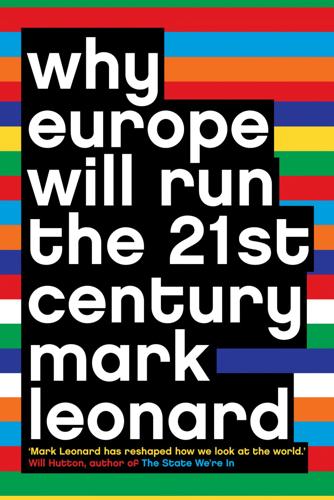
Why Europe Will Run the 21st Century
by
Mark Leonard
Published 4 Sep 2000
The best way to change the facts on the ground was through gradual change – what Monnet called engrenage. Each agreement to co-operate at a European level would lead inexorably to another agreement that deepened European integration. Once Europe’s leaders had agreed to remove tariffs, they focused on non-tariff barriers such as regulations, health and safety standards, and qualifications. When many of the non-tariff barriers had been addressed by the creation of a single market, Europe’s leaders focused on the single currency. Wider and wider groups of politicians and civil servants now had a stake in European integration. Thousands of meetings took place between officials from different governments, which meant, quite simply, that they got to know each other very well.
…
But these critics were missing the point of the European Union. The reason that people do not turn out in their droves to vote for the European Parliament is not because it has no power. It is because none of the issues in which the EU specializes – trade liberalization, monetary policy, the removal of non-tariff barriers, technical regulation in the environmental and other areas, foreign aid, and general foreign policy co-ordination – appears anywhere on the list of issues that voters care about.15 In fact, none of the policies in the five most important issues for voters in Europe – health care provision, education, law and order, pension and social security policy, and taxation – are set by the European Union.
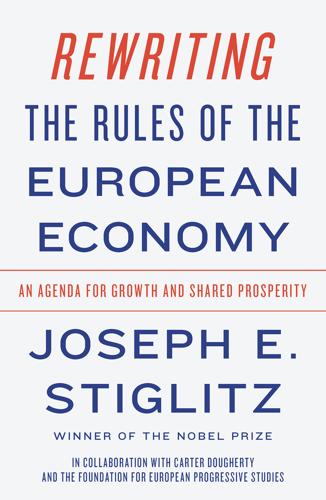
Rewriting the Rules of the European Economy: An Agenda for Growth and Shared Prosperity
by
Joseph E. Stiglitz
Published 28 Jan 2020
Provisions in recent trade agreements, going back to NAFTA, are designed to make it difficult, if not impossible, for new regulations to be imposed that adversely affect foreign investors, no matter what the social benefit. Corporations offer weak justification for their demands. They have said it is important to harmonize regulations and that different regulations act as non-tariff barriers to trade. They pleaded that all they are asking for is a reduction in these non-tariff barriers. However, when the corporations ask for harmonization, they typically mean doing so at the bottom, and not harmonizing up to the most stringent standards. The agenda of regulatory harmonization is actually an agenda for weakening regulations. But in most sectors and on most topics, we simply do not need to have full harmonization of regulations.
…
The reason for not including intellectual property in trade agreements is not only because it is an arena in which trade ministers have no real competence, but it is also that trade ministries traditionally ally closely with producer interests and give short shrift to other societal concerns. In our discussion of non-tariff barriers, for example, we noted the increased risk that this alliance with producer interests across countries leads to a skewed regulatory regime. There is an even greater risk in the case of intellectual property. Two sectors for which intellectual property protection are particularly important, pharmaceuticals and entertainment (copyrights), are not representative of the economy as a whole.
…
See home mortgages multilateralism, Trump and, 294, 296, 300–301, 311 multinational corporations, 198, 303–4, 318–20 Mundell, Robert, 33 NEET rates, 278 neoliberal (neoclassical) economics described, 13–14 limitations of, 14–16 perspective on retirees, 243 net public investment, 103–4 Netscape Navigator, 134 net wealth, taxation of, 190–91, 200 non-distortionary taxes, 187–88 non-tariff barriers, 317 North American Free Trade Agreement (NAFTA), 294–95 Obama, Barack, 211–12 OECD (Organization for Economic Cooperation and Development), 197 Office of the High Commissioner for Human Rights, 247 oligopolies, 129, 130, 220 One Belt, One Road initiative, 298, 302 Orderly Liquidation Authority, 181 Panama Papers, 196 Paradise Papers, 196 Paris climate accord, 328 patents, 144, 146–48 pension programs defined contribution systems, 248–49 informal economy adaptations, 247–48 job creation and, 246 neoliberal perspective on, 243 pension portability, 248 private sector failure, 243 privatizations, reversing, 244–46 public, misguided changes to, 243–44, 246–47 supplementing, with public option, 249–50 pharmaceutical companies intellectual property rules and, 145, 325 lack of transparency with, 312 place-based assistance, 274 Poland, 244, 245, 247, 271 political differences, 298–99 political divergence, 48–49 politics economics tied to, 95, 130 EU political rules, 10–11 of globalization, 221–22 Maastricht Treaty and, 75 Max Weber on, 9 political discontent, 2 political moment, current, 302–3 (see also globalization, mismanagement of) Portugal, 35, 36, 50, 219, 251 poverty rising, 218–19, 219 social protection and, 247–48 pre-distribution of market incomes, 223 Price Stability Doctrine, 18–19 private sector.

How Asia Works
by
Joe Studwell
Published 1 Jul 2013
However, the actual history of successful industrial development in Japan, Korea and Taiwan shows that at critical policy junctures each country increased regulation and protection to defend new industries. This occurred in the early 1960s in Japan, when the country instituted large tariff increases to defend new businesses being nurtured by MITI.234 And it happened in Korea and Taiwan in the 1970s when those states implemented their heavy industry drives. The same may now be underway, using non-tariff barriers, in China, despite the country’s 2001 accession to the World Trade Organisation. Perhaps the biggest, though rarely voiced, fear among historically literate economists at the IMF and the World Bank is that whenever industrial policy has been successful in the past, it has tended to lead to chronic trade surpluses.
…
Meanwhile, Korea’s GDP per capita in 2010 stood at USD20,600, double the level in 1997; its stock market, thanks to the Anglo-Saxon medicine, is a regional outperformer; and its consumers are finally beginning to enjoy the fruits of development in the form of cheaper consumer goods, better services and foreign holidays.243 One hesitates to declare that the timing of the IMF reforms in Korea was good. For one thing, some of the success of the Korean economy in the wake of 1997 reflects the government’s continued culling of weaker chaebol and effective use of non-tariff barriers to foreign competition, in line with traditional industrial policy.244 However, it is clear that the timing of the reforms in Korea was vastly better than that of the deregulation and privatisation instituted by the IMF in the Philippines in the 1980s, or in Thailand and Indonesia after the Asian crisis (not to mention IMF-like changes instituted unilaterally in Malaysia since Mahathir’s departure in 2003).
…
Already, Huawei lost out on a USD3 billion sale to Sprint-Nextel in the United States in 2010, and has been blocked from acquisitions which would have yielded it important technology on the basis of ‘national security’ concerns.41 Such impediments may affect more Chinese mid-stream firms in the future. Even if national security concerns are not invoked, developed country governments can deploy all kinds of other ‘non-tariff barriers’ to impede Chinese equipment sales. Since China does not itself operate open tenders for state procurement, and has not acceded to the WTO’s General Procurement Agreement (which regulates government purchases), the Chinese government has no legal recourse in such matters. Private firms from Japan and Korea have been able to enter rich countries by appealing direct to their consumers with cars, video cassette recorders and smart phones.
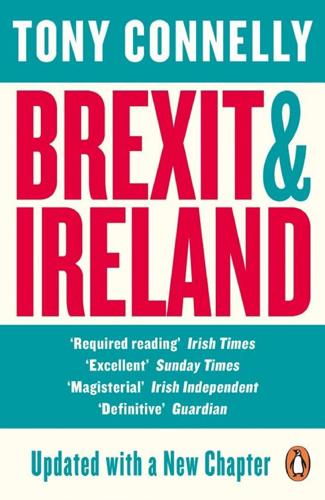
Brexit and Ireland: The Dangers, the Opportunities, and the Inside Story of the Irish Response
by
Tony Connelly
Published 4 Oct 2017
The prominence of the Irish issue is not least due to the effective information campaign by the Irish government.’ Ireland’s strategy had been evolving over very bumpy terrain since the referendum. The essential message was that Ireland didn’t want anything to change. Ireland would have to be able to trade freely with the UK, without any tariff or non-tariff barriers, and customs posts were not going to be acceptable. The Northern Ireland peace process and the Republic of Ireland’s economy depended on it. But the message on its own was not enough, even if Theresa May and Enda Kenny had repeatedly insisted, either jointly or individually, that there would be no return to the borders of the past.
…
Furthermore, the company says, no consumer will want to pay import VAT when collecting their incoming parcel, even if there is no duty. The company worries that ‘most legislators and commentators are too far removed from the daily practical realities of trade’ to be fully aware of the significance of non-tariff barriers, such as customs controls. The business does have direct experience of the EU single market from which Britain and Northern Ireland will be departing. It has tried hard to develop business outside the EU as well. But the costs incurred by geographical distance mean the company is far from reassured by the British government’s claims that trade with the rest of the globe will easily make up for the loss of access to the single market.
…
If the UK wanted to trade its financial services under WTO rules, it would face many more restrictions. ‘People go to the WTO,’ says an Irish official, ‘and list their service concessions, which is one page. Then they bring out the telephone book, which is the service areas which they’re exempting from competition.’ But the real crunch would be on what are called non-tariff barriers. Access to markets is now more likely to depend on compliance with the regulatory systems of those markets. It means UK products will have to comply with EU rules. Even if most products in the UK already conform on the day of Brexit, they may not conform over time. And if those products require independent testing, the agencies in the UK that carried out the testing are no longer EU-certified.

The Great Demographic Reversal: Ageing Societies, Waning Inequality, and an Inflation Revival
by
Charles Goodhart
and
Manoj Pradhan
Published 8 Aug 2020
Its accession was granted conditional upon a long list of liberalisation and opening-up measures (set mostly by the US) to allow greater access to, and see greater transparency in, China’s markets. China was, in broad terms, required to:Lower its tariffs to under 10% within five years and reduce tariffs on some agricultural imports almost to zero. The reduction or elimination of non-tariff barriers. The opening up of some key sectors including telecommunication and banking. Protecting global intellectual property rights. Examining the stringent nature of the conditions imposed on China (more stringent than any in the past and on most applicants since), Lardy (2001) questions somewhat why China’s leadership sought and accepted WTO membership.
…
A cursory glance at the conditions listed earlier suggests that China has done well in reducing headline tariff barriers and has opened up many parts of its economy to entry by foreign firms. Yet those were sectors in which it lacked domestic capabilities. Where domestic capabilities were prevalent or acquired, non-tariff barriers have remained in place and generally made it difficult for foreign firms to prosper in China. The US, on the other hand, had to make no new market access concessions. Most WTO members provide other members with MFN (Most Favoured Nation) status. If the US had not afforded China this status, WTO membership would have still gone through, but with a complicated relationship with the US.
…
National banking system, in US National Health Service (NHS) National Health Service, UK Nationalism, resurgent Nationalist populist parties National Living Wage (NLW) National Union of Mineworkers (NUM) National Vital Statistics System The Natural Rate of Interest Natural Rate of Unemployment, assumed fixed (u*) Natural Rate of Unemployment, consistently underestimated Natural Rate of Unemployment, falling Natural Rate of Unemployment, higher Natural Rate of Unemployment (NRU) Natural Rate of Unemployment (u*), continuously shifting Natural Rate of Unemployment (u*), variations in Negative official interest rates Nepal Netherlands Neurodegenerative Neurologists New York New Zealand Nigeria Nikkei equity index Nominal income bonds Nominal interest rates Nominal interest rates, decline of Nominal interest rates, in USA, falling Non-Accelerating Inflation Rate of Unemployment (NAIRU) Non-financial corporate sector Non-Inflationary with Continuous Expansion (NICE) Non-Paris Club creditors Non-performing assets Non-performing loans Non-regular employees Non-tariff barriers, elimination of Normans North America North Asia Northern America Norton, S. Norway Number of affiliates Nurses Nursing home care O Obesity Obstfeld, M. Occupational employment shares, changes in Oceania OECD OECD, main proposal on corporate taxation Office of Budget Responsibility (OBR) Official retirement age Offshored/imported Offshoring Ogawa, K.
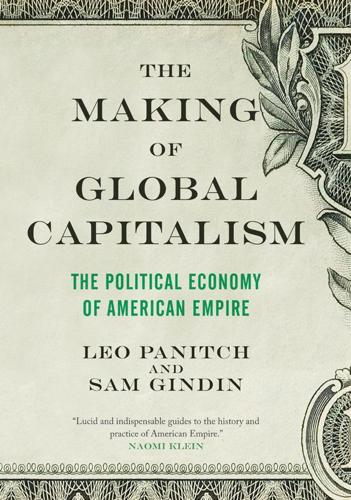
The Making of Global Capitalism
by
Leo Panitch
and
Sam Gindin
Published 8 Oct 2012
With very few exceptions, the Treasury’s consistent and effective opposition to the use of countervailing duties in relation to investigations of unfair trading practices by other states through the crisis of the 1970s permitted it not only to fend off the implementation of domestic protectionist measures, but to use the threat of these as a lever for the liberalization of foreign markets, including in relation to what were increasingly being identified as “non-tariff barriers” associated with other states’ domestic regulations.78 As an internal Treasury memo on export policy and exchange rates put it in 1975, “a policy of international interdependence is politically unacceptable except where job losses through imports are offset by creating jobs in expanding export industries.”
…
Rules, not political considerations as such, were to govern the decision of whether a specific industry was eligible for protection.”8 What globalization in good part entailed in the 1980s and 1990s was the extension of this process of juridification to other states, above all through the US drive to overcome “non-tariff barriers.” The issue was clearly defined as early as 1971, in the Report to the President by the Commission on International Trade and Investment Policy (chaired by the CEO of IBM), which contended that the US had “not received full value for the tariff concessions made over the years because foreign countries have found other ways, besides tariffs, of impeding access to their markets.”9 By the late 1960s, in good part because of the significant flow of US manufacturing trade that already occurred within American MNCs’ global operations, they were already pushing strongly for the adoption of a “non-tariff barriers” strategy.
…
The issue was clearly defined as early as 1971, in the Report to the President by the Commission on International Trade and Investment Policy (chaired by the CEO of IBM), which contended that the US had “not received full value for the tariff concessions made over the years because foreign countries have found other ways, besides tariffs, of impeding access to their markets.”9 By the late 1960s, in good part because of the significant flow of US manufacturing trade that already occurred within American MNCs’ global operations, they were already pushing strongly for the adoption of a “non-tariff barriers” strategy. But such barriers were seen as especially affecting the export of financial services (as well as communications, accounting, management, consultancy, and other such services) which, as we have seen, had already been identified inside the American state by the early 1970s as a key to solving balance-of-trade deficits.
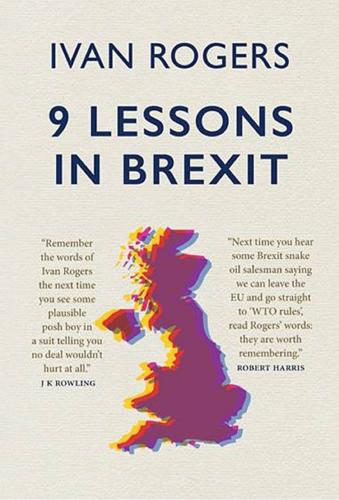
9 Lessons in Brexit
by
Ivan Rogers
Published 7 Feb 2019
So far, both during the referendum and since, the trade debate has been dominated by trade in goods, tariffs issues and some discussion of the impact on manufacturing supply chains of departing the Single Market and Customs Union. I don’t want to be excessively unkind here, but politicians find goods trade and tariffs more graspable than services trade and the huge complexities of non-tariff barriers in services sectors. They rarely grasp the extent to which goods and services are bundled together and indissociable. They even more rarely grasp how incredibly tough it is to deliver freer cross-border trade in services which, by definition, gets you deep into domestic sovereignty questions in a way which makes removing tariff barriers look easy.
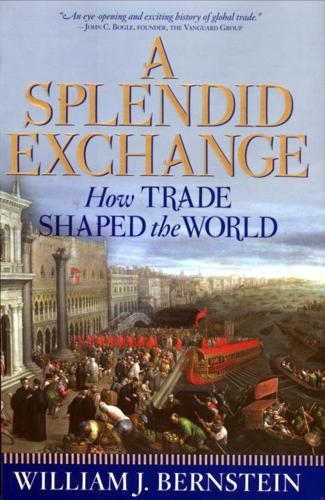
A Splendid Exchange: How Trade Shaped the World
by
William J. Bernstein
Published 5 May 2009
By the time the legislation reached the Senate, foreign ministries the world over sent protests to the State Department and boycotts were already under way; virtually all American economists of any stature-1,028 in all-signed a petition to Hoover pleading for a veto.30 To no avail. On June 17, 1930, he signed Smoot-Hawley into law and so set off retaliation and trade war. Covering tens of thousands of items, the bill seemed designed to offend every last trading partner. It deployed many "non-tariff barriers" as well. For example, bottle corks constituted about half of Spanish exports to the United States; not only did the new law increase the tariffs on corks to prohibitive levels, it also required that they be stamped with their country of origin, a process that actually cost more than the cork itself.
…
In most countries, farmers have succeeded in portraying themselves as the "soul of the nation," in spite of the fact that they constitute no more than a small percentage of the workforce in most developed countries. From the outset, the world's farmers and textile manufacturers were able to exclude themselves from the GATT framework and maintain high tariffs and, even more importantly, non-tariff barriers such as quotas, restrictions, and subsidies on both domestic production and exports. The survival of protection for textiles and agricultural products has clearly cost the world's developing nations dearly, as these are the two areas in which they have the greatest comparative advantages. Exactly how and why this occurred is a matter of some controversy.
…
On only one occasion did he ask his dedicated young aide to leave the room so that he could answer a call in private. The caller was neither the British prime minister nor the pope, but Alfonso ("Alfie") Fanjul.56 Since the inception of GATT, virtually all nations have sidestepped its best efforts to lower barriers to agricultural trade-the rich nations with non-tariff barriers (mainly subsidies) and the poor ones with direct tar- iffs.57 After the September 11 attacks, the United States and Europe convened the Doha Round of GATT talks under the auspices of the newly formed World Trade Organization (WTO)-the successor to the ITO. The Doha Round explicitly sought to end all subsidies by 2013 in order to alleviate poverty in the developing world, the breeding ground for international terrorism.
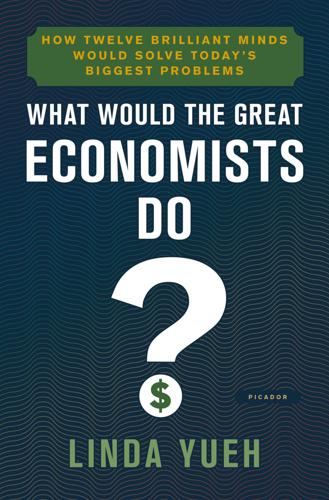
What Would the Great Economists Do?: How Twelve Brilliant Minds Would Solve Today's Biggest Problems
by
Linda Yueh
Published 4 Jun 2018
But, a number of governments use tariffs to protect their industries from competition from bigger global rivals until they are more mature. Labour groups also want protection for domestic jobs. So, tariffs are more than just an economic decision to impose a tax. There are often political motives behind their imposition. There are also non-tariff barriers (NTBs) to add to the mix. These are the other ways to be protectionist without imposing tariffs, such as through insisting on standards for certain industries that can restrict imports. For instance, Thai prawn exporters found it hard to meet American standards for the type of net that allowed them to sell to the US.
…
joint-stock companies Jones, Homer Journal of Economic Perspectives Journal of Political Economy JPMorgan Juncker Plan Kahn, Richard Kant, Immanuel Keynes, John Maynard and the backlash against globalization and the Bloomsbury Group and Bretton Woods System and budget deficits counter-cyclical policies and crowding out on depression/recession The Economic Consequences of the Peace fiscal activism and Friedman The General Theory of Employment, Interest and Money and government spending on government’s role in economy and Hayek and investors Keynesian revolution legacy life and times of and Marshall and Niemeyer and paradox of thrift at Paris Peace Conference Prices and Production and public investment and Robbins Robinson and Keynes/Keynesian economics and Schumpeter and ‘socializing investment’ A Tract on Monetary Reform and the Treasury A Treatise on Money wealth Keynes, John Neville Khrushchev, Nikita Knight, Frank Kodak Korea North South Krugman, Paul Krupp Kuznets, Simon labour force growth labour productivity and work incentive laissez-faire landowners Lassalle, Ferdinand Latin America currency crisis (1981–82) see also specific countries League of Nations Lehman Brothers Lenin, Vladimir Leontief, Wassily Lewis, Arthur Lewis, Barbara (‘Bobby’) Life Extension Institute Linda for Congress BBC documentary London London School of Economics and Political Science London Stock Exchange Long Depression (1880s) Lopokova, Lydia Louis XIV LSE see London School of Economics and Political Science Lucas, Jr, Robert Ma, Jack (Ma Yun) Maastricht Treaty macroprudential policy see also central banks; financial stability Malaysia Malthus, Thomas Manchester Mandela, Nelson manufacturing additive (3D printing) automation in China and deindustrialization GDP contribution in UK German high-tech and industrialization see also industrialization Japan ‘manu-services’ ‘March of the Makers’ mass-manufactured goods and national statistics reshoring rolling back deindustrialization process and Smith trade patterns changed by advanced manufacturing US Mao Zedong Maoism ‘March of the Makers’ marginal utility analysis marginalism market forces/economy ‘Big Bang’ (1986) competition see competition and economic equilibrium see economic equilibrium emerging economies see emerging economies Hayek and the supremacy of market forces ‘invisible hand’ and laissez-faire and Marx 4 self-righting markets supply and demand see supply and demand Marshall, Alfred on approach to economics and the backlash against globalization and the Cambridge School and decentralization Economics of Industry and education’s role in reducing inequality and inequality and Keynes and laissez-faire legacy life and times of marginal utility analysis and Marx and poverty Principles of Economics and utility theory Marshall, Mary, née Paley Marx, Heinrich Marx, Henriette, née Pressburg Marx, Jenny, née von Westphalen Marx, Karl and agriculture and the backlash against globalization Capital and capitalism and China and class Communist Manifesto (with Engels) communist theories A Contribution to the Critique of Political Economy doctoral thesis The Eighteenth Brumaire of Louis Bonaparte and Engels journalism life and times of and Marshall and rate of profit and Ricardo and Russia on service sector workers surplus value theory and the Young Hegelians Marx, Laura Marx, Louise Marxism and the Austrian School and unemployment see also Marx, Karl Mason, Edward mathematical economics Mauritius May, Theresa Meade, James median income Menger, Carl mercantilist policies see also Corn Laws Merkel, Angela Mexico middle class China and economic growth and economic inequality and European revolutionaries income and industrialization and Keynes and Heinrich Marx as proportion of world population and Schumpeter social resentment US Mill, James Mill, John Stuart On Liberty Principles of Political Economy Minsky, Hyman Mises, Ludwig von Mitchell, Wesley mobile phones/smartphones monetarism see also Friedman, Milton monetary policy and Friedman tools see also quantitative easing (QE) see also central banks monopolies and Marx natural and Robinson and Schumpeter and Smith and Sraffa monopsony Mont Pelerin Society Morgenthau, Henry mortgage-backed securities (MBS) mortgage lending and the 2008 financial crisis sub-prime Myanmar Myrdal, Gunnar Napoleon I Napoleon III Napoleonic Wars national/official statistics China UK US national debt Austria and central banks China and creditors and debt forgiveness and deficits euro area and foreign exchange reserves and investment Japan major economies owed to foreigners and quantitative easing and Ricardian equivalent UK US Vietnam National Health Service (UK) National Infrastructure Commission (UK) Navigation Acts neoclassical economics convergence hypothesis ‘neoclassical synthesis’ New Neoclassical Synthesis see also Fisher, Irving; Marshall, Alfred; Solow, Robert Neoclassical Synthesis see also Samuelson, Paul New Classicists see also Lucas, Jr, Robert New Deal New Institutional Economics see also North, Douglass New Keynesians see also Stiglitz, Joseph New Neoclassical Synthesis New Rhineland News (Cologne) New Rhineland News: Review of Political Economy (London) new trade theory New York Herald New York Times New York Tribune Newcomb, Simon Newsweek Niemeyer, Sir Otto Nissan Nixon, Richard Nokia non-tariff barriers (NTBs) Nordhaus, William North, Douglass and the backlash against globalization and development challenges doctoral thesis The Economic Growth of the United States from 1790 to 1860 and institutions Institutions, Institutional Change and Economic Performance life and times of Nobel Prize path dependence theory and Smith North, Elizabeth, née Case North Korea Northern Rock Oak Ridge National Laboratory Obama, Barack Occupy movement oil industry Organisation for Economic Co-operation and Development (OECD) Osborne, George Overseas Development Institute (ODI) Oxford University Balliol College Paine, Thomas Paley, Mary Paris Peace Conference path dependence theory see also North, Douglass Peel Banking Act Philips, Lion Philips (electronics company) physical capital Physiocrats Pigou, Arthur Cecil Piketty, Thomas pin-making Pinochet, Augusto Ponzi finance populism Portugal poverty aid and development see economic development challenges eradication/reduction frictional and Marshall and Marx and median income people lifted from in South Africa productivity and agriculture ‘benign neglect’ of Britain’s productivity puzzle and computers and economic growth and education and factor reallocation and Germany and Hayek incentives and industry/industrial revolution and innovation and investment Japan and jobs labour see labour productivity and land low and Marshall moving into higher sectors of and pricing raising and Schumpeter and secular stagnation slow economic and productivity growth and the future and specialization and technology total factor productivity and trade and wages Prohibition protectionism agricultural see also Corn Laws Navigation Acts public-private partnerships public investment and Keynes public spending general government spending see government spending public investment see public investment squeeze see also austerity Puerto Rico quantitative easing (QE) Quantity Theory of Money see also Friedman, Milton; monetarism; Equation of Exchange Rand, Ayn RAND Corporation rate of profit rational expectations theory Reagan, Ronald recession/depression debt-deflation theory of depression Great Depression see Great Depression (1930s) Great Recession (2009) Greece ‘hangover theory’ of Hayek on and Keynes Long Depression (1880s) second recession (1937–38: recession within the Depression) in UK 1970s redistribution Regional Comprehensive Economic Partnership (RCEP) Reich, Robert reindustrialization Reisinger, Anna Josefina Remington Rand rent-seeking research and development (R&D) investment China Research in Motion (RIM) retail trade Rhineland News Ricardian equivalence Ricardo, David and the backlash against globalization and class comparative advantage theory and the Corn Laws Essay on the Influence of a Low Price of Corn on the Profits of Stock The High Price of Bullion international trade theory as a landlord life and times of as a loan contractor and Marx On the Principles of Political Economy and Taxation and Schumpeter and Smith wealth Ricardo, Priscilla Robbins, Lionel Robinson, Austin Robinson, James Robinson, Joan The Accumulation of Capital and the AEA and the backlash against globalization and communism Economic Philosophy The Economics of Imperfect Competition Essays in the Theory of Employment and imperfect competition Introduction to the Theory of Employment and Keynes and Keynesian economics life and times of and monopolies monopsony theory and Schumpeter and unemployment wage determination theory robotics Rodrik, Dani Rolls-Royce Roosevelt, Franklin D New Deal Russia 1905 Revolution and Lenin and Marx Samsung Samuelson, Paul and the backlash against globalization Economics factor-price equalization theorem Nobel Prize savings for capital investment and inflation and Keynes and the ‘paradox of thrift’ Say, Jean-Baptiste Schmoller, Gustav von Schumpeter, Anna, née Reisinger Schumpeter, Gladys, née Seaver Schumpeter, Joseph and the backlash against globalization as banker/investor Business Cycles and capitalism Capitalism, Socialism and Democracy ‘creative destruction’, innovation and ‘The Crisis of the Tax State’ and the Econometric Society economics and entrepreneurs on Fisher and Hayek History of Economic Analysis and Keynes legacy life and times of The Nature and Content of Theoretical Economics and perfect competition and Ricardo and Robinson Theory of Economic Development wealth Schumpeter, Romaine Elizabeth, née Boody Schumpeter Group of Seven Wise Men Schwartz, Anna Jacobson Schwarzenegger, Arnold Scottish Enlightenment Seaver, Gladys Ricarde see Schumpeter, Gladys secular stagnation self-interest services sector China and deindustrialization financial services see financial services global trade in services human capital investment invisibility of liberalization ‘manu-services’ and Marx move away from and national statistics output measurement productivity and innovation and Smith Trade in Services Agreement (TiSA) UK US shadow banking Shiller, Robert silver Singapore Skidelsky, Robert skill-biased technical change skills shortage small and medium-sized enterprises (SMEs) smartphones/mobile phones Smith, Adam and the backlash against globalization as Commissioner of Customs for Scotland economic freedom on ‘invisible hand’ of market forces and laissez-faire economics legacy life and times of and manufacturing and Marx and North and Physiocracy on rate of profit and rebalancing the economy and Ricardo and the services sector and state intervention The Theory of Moral Sentiments The Wealth of Nations social capital social networks social services socialism communist see communism vs welfare state capitalism Solow, Barbara (‘Bobby’), née Lewis Solow, Robert and the backlash against globalization with Council of Economic Advisers doctoral thesis economic growth model ‘How Economic Ideas Turn to Mush’ John Bates Clark Medal and Keynesian economics life and times of Nobel Prize Presidential Medal of Freedom and technological progress Sony Sorrell, Sir Martin South Africa South Korea Soviet Union and China Cold War collapse of see also Russia Spain specialization spontaneous order Sraffa, Piero stagflation Stanley Black & Decker state government regulation intervention in the economy laissez-faire STEM (science, technology, engineering and mathematics) workers sterling Stigler, George Stiglitz, Joseph stocks and Fisher and interest rates US railroad Strachey, Lytton Strahan, William Strong, Benjamin Sturzenegger, Federico Summers, Lawrence supply and demand see also market forces/economy: ‘invisible hand’ Sustainable Development Goals (SDGs) Taiwan Tanzania tariffs taxation and austerity devolved powers of flat for government deficit spending before Great Depression and inequality and investment Japan and Marshall negative income tax to pay off national debt Pigouvian tax progressive and Reagan redistribution through Schumpeter on Smith on Taylor, John Taylor, Overton H.
…
technology ICT see information and communications technology inequality and technological change institutions and technological progress new technologies and economic growth robotics and Solow’s economic growth model and unemployment and wages telecommunications industry mobile phones/smartphones temporary workers Tennessee term auction facility (TAF) Thackeray, William Makepeace Thailand Thatcher, Margaret total factor productivity (TFP) Townshend, Charles Toyota trade on basis of comparative advantage Britain as largest world trader changing face of creation of ‘winners’ and ‘losers’ deficits see trade deficits and deindustrialization distributional impact expansion exports see exports free trade see free trade German and globalization new trade theory non-tariff barriers patterns changed by advanced manufacturing and productivity Ricardo’s model of international trade in services see services sector and specialization surplus tariffs/barriers trade-to-GDP ratio Transatlantic Trade and Investment Partnership Trans-Pacific Partnership between UK and US voter backlash and wages WTO see World Trade Organization trade deficits current account deficit and Ricardo significance of UK US Trade in Services Agreement (TiSA) trade unions decreased unionization Trans-Pacific Partnership (TPP) Transatlantic Trade and Investment Partnership (TTIP) transport facilities Trier, Germany Trump, Donald Trumpism Turkey Ulyanov, Vladimir Ilich (Lenin) unemployment disguised/hidden and economic growth and the Great Depression and hysteresis long-term unemployment rate and Marxism and Robinson and robotics in South Africa stagflation U-6 rate US youth United Kingdom see Britain/UK United Nations United States and the 2008 financial crisis 1 ‘America First’ policy American Civil War anti-big business sentiment Banking Acts (1933 and 1935) car industry Cold War company mergers Council of Economic Advisers deindustrialization the dollar Fed see Federal Reserve GDP and the gold standard in Great Depression and Hayek housing market industrialization inequality institutions and economic success interest rates labour force growth laissez-faire manufacturing middle class National Bureau of Economic Research (NBER) National Industrial Recovery Act New Deal productivity and wage growth rebalancing the economy reindustrialization reshoring services sector stagnant/low wages trade deficit trade unions Trans-Pacific Partnership Transatlantic Trade and Investment Partnership Treasury Trumpism UK trade with unemployment Vietnam War War of Independence USSR see Soviet Union utility theory Vereinigte Stahlwerke Versailles, Treaty of Vienna Austrian Institute for Business Cycle Research stock market crash University of Vietnam Communist Party institutional challenge Viner, Jacob wages and competitiveness and employment levels and globalization and imperfect competition and inflation median minimum negotiations/bargaining Nixon’s controls problem with low pay and productivity Robinson’s theory of wage determination stagnant 1 and technology/automation and trade Walkman Wall Street Journal Wallis, Allen Walras, Leon Wang Jianlin Wang Sicong Washington Consensus Weber, Max welfare state socialism vs welfare state capitalism Westphalen, Ferdinand von Westphalen, Jenny von (Jenny Marx) Westphalen, Johann Ludwig von Whitbeck, John Wiko Wilson, James Wilson, Woodrow wine Wolff, Wilhelm Woolf, Virginia World Bank and poverty World Trade Organization (WTO) WPP Yellen, Janet Young Hegelians youth unemployment About the Author LINDA YUEH is an economist, broadcaster, and author.

Brexit, No Exit: Why in the End Britain Won't Leave Europe
by
Denis MacShane
Published 14 Jul 2017
It would mean that not only could the other members of the EU and EEA impose their own conditions on trade with Britain but so could the rest of the world, as Britain would no longer have the benefits and protections of being party to the EU trade rules with other countries. Any country could impose tariffs or the more problematic non-tariff barriers to trade. The UK exports about 49 per cent of all its exports of goods and services to the EU, while the UK market for the rest of the EU is about 3 per cent of its total GDP, according to economist Jonathan Portes of the NIESR. If the UK unilaterally left the EU, as John Redwood and others who think it is just a matter of repealing the 1972 Act argue, Britain would be left naked, without any trade treaty or agreement anywhere in the world.
…
Forty-nine per cent of UK exports of goods and services go to the EU. But only 16 per cent of EU exports of goods come to the UK. (It is important to remember that it is trade in services that is the real money-maker and where the UK runs a healthy surplus with the EU. But services are most vulnerable to non-tariff barriers and the WTO membership does little to force nations that do not want to buy services to do so.) So making an offer not to impose tariffs on imports from the EU may sound generous but it is mainly to the UK’s advantage. In exchange the anti-Europeans want to limit and discriminate against EU citizens who want to work, start up firms and contribute to the UK economy and its tax base.

The New Harvest: Agricultural Innovation in Africa
by
Calestous Juma
Published 27 May 2017
The institutional framework for the process was adopted, and formal negotiations were launched in June 2011 in South Africa. It includes a summit, council of ministers, sectoral ministerial committees, and a negotiations forum. The first phase of negotiations (lasting up to one year) covers trade in goods (including tariff liberalization, rules of origin, customs cooperation, non-tariff barriers, trade remedies, sanitary and phytosanitary measures, technical barriers to trade, and dispute settlement). The second phase (lasting up to five years) covers traderelated issues (including trade in services, intellectual property rights, competition policy, trade development, and competitiveness).
…
The COMESA harmonization agenda—now implemented through its specialized agency, the Alliance for Commodity Trade in Eastern and Central Africa—was initiated to provide mechanisms for wise and responsible use of genetically modified organisms in commercial planting, trade, and emergency food assistance. COMESA, within its mandate of regional economic integration, recognizes the need to support member states in resolving non-tariff barriers that constrain markets and stifle the integration of food products into regional and global value chains, as an innovative strategy to promote market access to regional and international trade. 250 THE NEW HARVEST Such systems are vital to assuring the quality, safety, and efficacy of locally manufactured products and their positive contribution to public health.

The Globalization Paradox: Democracy and the Future of the World Economy
by
Dani Rodrik
Published 23 Dec 2010
The success of the Bretton Woods era suggests that healthy national economies make for a bustling world economy, even in the presence of trade controls.6 Consider the long list of areas liberalization barely touched. Agriculture was kept out of GATT negotiations and remained riddled with tariff and non-tariff barriers—most infamously in the form of variable import quotas aimed at stabilizing domestic prices at levels much higher than in exporting countries. Most services (insurance, banking, construction, utilities, and the like) escaped liberalization as well. Manufacturing sectors that were liberalized but began to face significant competitive threat from lower-cost/higher-productivity exporters soon received protection rather than meet their fate.
…
In brief, China opened up very gradually, and significant reforms lagged behind growth (in exports and overall incomes) by at least a decade or more. While state trading monopolies were dismantled relatively early (starting in the late 1970s), what took their place was a complex and highly restrictive set of tariffs, non-tariff barriers, and licenses restricting imports. These were not substantially relaxed until the early 1990s. The Chinese leadership resisted the conventional advice in opening their economy because removing barriers to trade would have forced many state enterprises to close without doing much to stimulate new investments in industrial activities.

The Corruption of Capitalism: Why Rentiers Thrive and Work Does Not Pay
by
Guy Standing
Published 13 Jul 2016
The construction of the global market system has been marked by a proliferation of over 3,200 bilateral and multilateral treaties on trade and investment, most of which have never been subject to any democratic mandate or accountability.34 This is nothing like an open market system, although many of the deals have been depicted as favouring ‘free trade’. The Uruguay Round of trade negotiations that began in 1986 extended the scope of trade talks beyond tariff cutting to non-tariff barriers such as product health and safety rules, liberalisation of services and protection of intellectual property. These accords came into force in 1995 alongside the creation of the WTO. Although there has been no comprehensive multilateral agreement since then – the Doha Round launched in 2001 having run into the sand – there have been more than ten regional deals a year, on average, over that time.35 But trade deals are far outnumbered by bilateral investment treaties (BITs), part of a murky legalistic system creating a straitjacket favouring commercial interests.
…
It was in negotiation with the EU on a Transatlantic Trade and Investment Partnership (TTIP) and had just finalised lengthy negotiations on the mammoth Trans-Pacific Partnership (TPP), a far-reaching and controversial accord with Canada and ten Asian and Latin American countries accounting for 40 per cent of world output and a third of world trade. The TPP, though still awaiting ratification, is especially significant as setting a template for future trade deals. It sets a high bar for reductions in tariff and non-tariff barriers to trade in goods, opens up markets for services, including banking and insurance, strengthens intellectual property protection and limits subsidies to state enterprises. While it obliges governments to comply with environmental and labour standards, enforcement provisions are predictably weak.
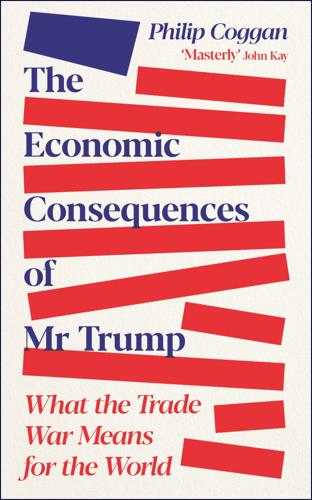
The Economic Consequences of Mr Trump: What the Trade War Means for the World
by
Philip Coggan
Published 1 Jul 2025
It would need to be a lot longer to cover the threats made on social media, the leaks from within the administration about future policy directions, and the boasts about the number of countries eager to make a deal with the US. Formula is too formal a word for it The best evidence that these policy changes were not part of a strategic plan came with the ‘formula’ used to calculate the tariffs announced on 2 April. Before the announcement, the White House had hinted at a complicated calculation of tariff and non-tariff barriers, including currency manipulation, regulation and taxes. But what emerged was nothing so analytical. Instead, the calculation started with the US’s 2024 trade balance in goods with a wide variety of countries and territories. This trade balance was then divided by the country’s exports to the US and the result was deemed to be the level of ‘tariffs’ applied by the foreign nation.
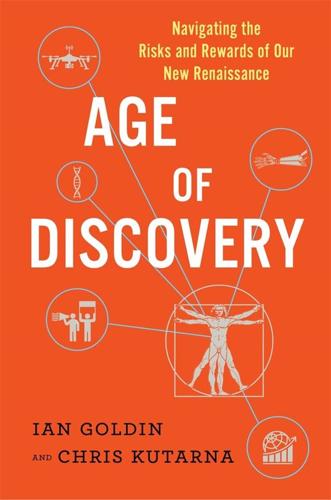
Age of Discovery: Navigating the Risks and Rewards of Our New Renaissance
by
Ian Goldin
and
Chris Kutarna
Published 23 May 2016
In advanced economies, average tariffs on imports are already near zero, and current regional trade initiatives, like the Trans-Pacific Partnership (TPP) between the US and 11 other states around the Pacific Rim, and the Transatlantic Trade and Investment Partnership (TTIP) between the US and the European Union (EU), aim to tear down many non-tariff barriers.*** Regional clubs—the EU (rededicated in 1993), the North American Free Trade Agreement (NAFTA, since 1994), the Free Trade Area of the Association of Southeast Asian Nations (ASEAN, 1992), the Southern Common Market (MERCOSUR, 1991) and the Southern African Development Community (SADC, 1992)—have deepened political and economic harmonization among close neighbors.
…
As early as 1402, maps in the court of Korea’s Choso˘n Dynasty demonstrated knowledge of Africa’s southern tip, likely of Arabic origin via trade with China. ** Specifically, the Caribbean. John Cabot, sent by the British, found North America in 1497. *** Common non-tariff barriers include differences in how regulators of different countries treat similar products. For example, most US beef cannot be sold into the EU because many of the growth-promoting hormones used by ranchers in the former are banned in the latter. **** The prize for the first use of movable type for printing properly belongs to Bi Sheng (990–1051), who developed such a system in China around 1040 AD.
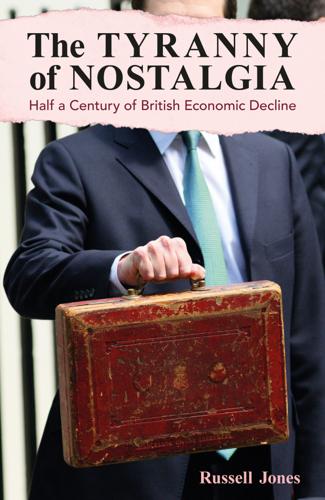
The Tyranny of Nostalgia: Half a Century of British Economic Decline
by
Russell Jones
Published 15 Jan 2023
Second, it examined a negotiated bilateral trade agreement, such as that which existed between the UK and Canada. And third, it assessed the option of the UK trading with the EU on the basis of World Trade Organization rules alone, which would leave the economy confronted by a wall of tariff and non-tariff barriers to trade.6 The Treasury’s 200-page report unsurprisingly concluded that the UK’s economic openness and interconnectedness would be reduced in each of the examined scenarios. Trade, investment (including inward foreign direct investment) and migration flows with the EU would all be lower, and the UK stood to be permanently poorer as a result.
…
In the meantime, government and Bank of England economists produced rough assessments of the effects of the agreement in November 2018 that suggested that May’s deal would undoubtedly be better for the economy than crashing out of the EU without any agreement at all. They also concluded that Britain would ultimately be far better off staying in.20 The Bank concluded that a no-deal Brexit, and the blizzard of tariff and non-tariff barriers to trade and movement that went with it (not least across the service sector), could unleash a recession worse than that which had followed the GFC, with GDP potentially falling by around 10%.21 Government economists suggested that an outcome similar to the exit deal struck with the EU – one involving some new trade frictions at the border and sharp restrictions on immigration – would leave UK GDP some 4% lower than it would have otherwise been over fifteen years.

Revolting!: How the Establishment Are Undermining Democracy and What They're Afraid Of
by
Mick Hume
Published 23 Feb 2017
The difference is only one of degree, not of kind … none of the following is new: the declining relevance of distance; the “ideas” economy; the “weightless” economy; liberation by “microchip”; “Jihad vs. McWorld” … and the twilight of sovereignty.’14 And far from globalised finance being able to override national barriers at will today, cross-border economic activities are now arguably constrained by state actions far more than a century ago, through regulations, protectionism policies, non-tariff barriers and other controls, including on the ‘free movement’ of people. None of this would have been news to one of the old masters of economic analysis, John Maynard Keynes. Writing in 1919, shortly after the end of the First World War, Keynes was already feeling nostalgic about the open world economy that had been lost when war broke out: ‘What an extraordinary episode in the economic progress of man that age was which came to an end in August, 1914!’
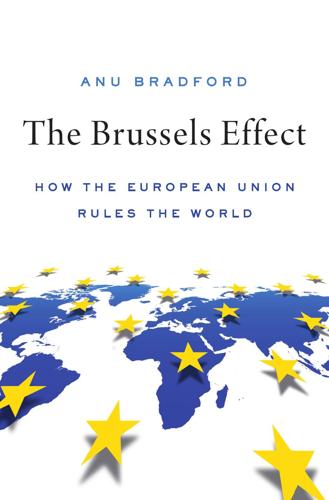
The Brussels Effect: How the European Union Rules the World
by
Anu Bradford
Published 14 Sep 2020
This shift is associated with a broader global development in the early 1990s, where the external effects of countries’ regulatory policies began to occupy the global trade agenda. Increased efforts to engage in “global governance” in various forms led to increased regulatory cooperation and multilateral standard setting. Various domestic regulations were increasingly seen as non-tariff barriers, prompting multilateral efforts to abolish them. These negotiations culminated in the establishment of the WTO in 1995. Partly for this reason, the external effects of the EU’s regulatory policies became a more salient issue, both within and outside the EU. Internal Motives: Single Market The EU has traditionally externalized its regulations without any active effort to shape markets other than its own.
…
, Coimma Blog (Oct. 06 2014), http://www.coimma.com.br/balancas-e-troncos/A_carne_produzida_no_Brasil_tem_hormonio.html [https://perma.cc/KX78-HXSX]; Meg Cristina de Campos Pires. Análise sobre o comércio entre Brasil e União Europeia e as barreiras não tarifárias que o afetam [Analysis on the commerce relationship between Brazil and the European Union and the non-tariff barrier that affects it], (Ph.D. Thesis, Universidade Estadual Paulista) 3 (2012). 124.Brazil Exports Only 20% of Beef Produced and RevenuesReach U.S. $5.9B, Comex (Mar. 6, 2016), https://www.comexdobrasil.com/brasil-destina-a-exportacao-apenas-20-da-carne-bovina-produzida-e-receita-chega-a-us-59-bi/ [https://perma.cc/5C9M-N54M]. 125.Jale Tosun & Maurıcio de Moraes, Marcondes Import Restrictions and Food-Safety Regulations: Insight from Brazil, 7 Latin Am.
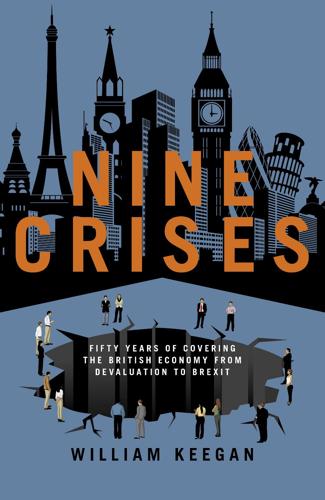
Nine Crises: Fifty Years of Covering the British Economy From Devaluation to Brexit
by
William Keegan
Published 24 Jan 2019
There has been much confusion, indeed ignorance, in discussion within the UK about the customs union and the single market. Membership of the customs union removed physical barriers to trade within the EU, and the single market – let me emphasise again that this was Mrs Thatcher’s proud achievement – removed many non-tariff barriers. There seems to have been negligible progress since Mrs May committed the country to leaving the EU, with or without a deal, at the end of March 2019. It is obvious that the country is bitterly divided on this issue. I was particularly struck in September 2017 when I attended a conference held by the Ambrosetti Foundation in Italy and listened to a speech by Michel Barnier, the EU’s chief negotiator.
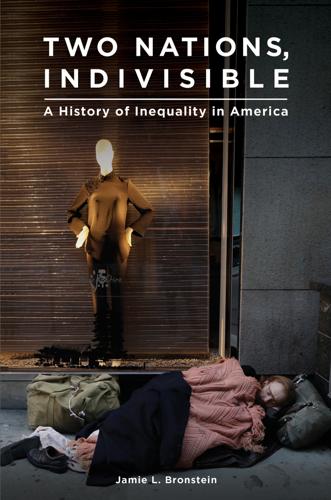
Two Nations, Indivisible: A History of Inequality in America: A History of Inequality in America
by
Jamie Bronstein
Published 29 Oct 2016
Factories in Asia could quickly adapt to slight product changes.65 Companies that could do so in the 1990s cut their costs by offshoring portable jobs, maximizing profit through lower input costs (it is estimated that labor costs are “58 to 72 percent lower in China and 22 to 62 percent lower in Mexico”), but at the same time contributing to American unemployment.66 Computers and telecommunication advances enabled companies to use smaller workforces to accomplish their goals, also helping to increase unemployment.67 Free trade became another vector of inequality during the Clinton administration, in the form of the North American Free Trade Agreement (NAFTA). NAFTA was designed to foster economic growth throughout the United States, Canada, and Mexico by lowering tariff barriers. After NAFTA, the value added to American manufacturing by Mexican assembly plants, or “maquiladoras,” tripled.68 “By 1999, tariff and non-tariff barriers had been removed on 65 percent of goods … and the value of trade between the USA, Mexico, and Canada trebled between 1993 and 2007. Inward foreign direct investment increased fivefold over the same period.”69 This prosperity was not equally shared, however. NAFTA disadvantaged low-waged workers in the United States who were doing the sorts of assembly work that could be outsourced south of the border, and even Mexican workers employed by the new maquiladoras found that their wages fell.
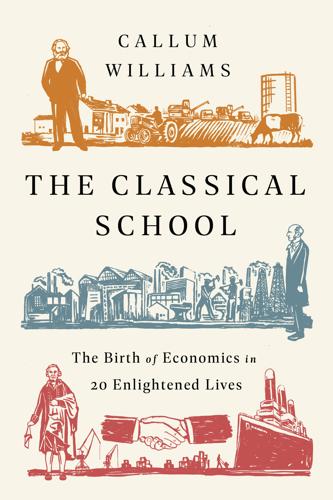
The Classical School
by
Callum Williams
Published 19 May 2020
Colbert in effect believed that the more precise the regulations, the more unique a product France could produce. That in turn would allow France to corner the market, and hence more people could end up in work. In 1666 Colbert issued a rule which in effect stipulated that fabrics made in Dijon had to contain exactly 1,408 threads. Regulations such as these were in the modern jargon a “non-tariff barrier”, making it more difficult for foreign fabric-makers to get access to the French market. The desire to boost jobs was also behind his imperialistic instincts. According to C. W. Cole, writing in 1939, Colbert believed that as a result of French expansion into the West Indies “employment would be given to 6,000 more Frenchmen”.
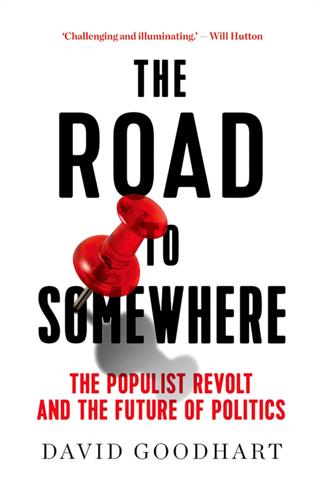
The Road to Somewhere: The Populist Revolt and the Future of Politics
by
David Goodhart
Published 7 Jan 2017
The idea was to make a reality of the so-called four freedoms of goods, services, capital and people by harmonising and coordinating a huge range of factors, from state subsidies to product specifications. It was also supposed to open up the services sector, particularly important to Britain, which is often subject to a thicket of non-tariff barriers. (Thirty years later about 60 per cent of the EU’s services market remains closed to cross-border trade.) These changes involved significant intrusions into national life, and many measures were even subject to majority voting, meaning countries could no longer apply national vetos if they felt their fundamental interests were threatened.
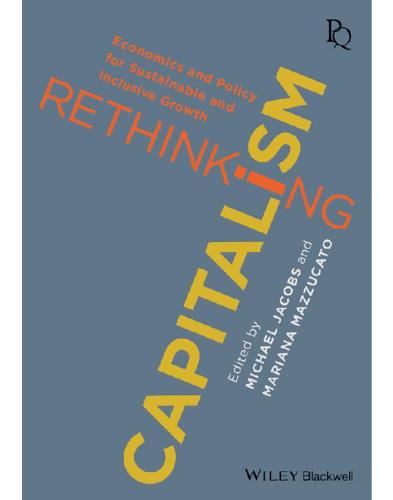
Rethinking Capitalism: Economics and Policy for Sustainable and Inclusive Growth
by
Michael Jacobs
and
Mariana Mazzucato
Published 31 Jul 2016
The expansion of corporate political power is well exhibited in proposals for a general trade treaty between the EU and the US, the Transatlantic Trade and Investment Partnership (TTIP). TTIP is a plan for a major relaxation of barriers to trade between member states of the EU and the US. Most tariff barriers have already been negotiated away in various global agreements. What remain are the so-called non-tariff barriers. These extend from rules designed to keep international competitors out of domestic markets, to regulations to protect health, labour rights and various concepts of public and collective goods. What marks TTIP out from previous trade agreements is the attempt to end the exemption of public services from trade provisions.

Red Flags: Why Xi's China Is in Jeopardy
by
George Magnus
Published 10 Sep 2018
Protectionist trade measures are on the rise. Global Trade Alert, a monitoring organisation, reported that since it started work in 2008, over 6,000 protectionist measures have been introduced by G20 countries.5 The main tool used to restrain trade was not tariffs as such, but rather a variety of so-called non-tariff barriers, such as state aid, financial favouritism of local firms, tax incentives for exporters, bail-outs, and trade defence measures such as anti-dumping duties, which are levied on imports that recipient countries think are priced below fair market value or what exporting countries charge in their home market.

Corbyn
by
Richard Seymour
There will be a significant lag in negotiating a new set of trading arrangements with the EU: the two-year Article 50 negotiations are to finalise the terms of divorce, with the real negotiations on a new set of relationships coming afterwards. And even if Britain achieves tariff-free trade with the rest of Europe, which EU negotiators insist will only be possible if the UK remains in the single market, there are likely to be some costs in terms of non-tariff barriers. Most forecasts expect some costs even if Britain were to remain within the European Economic Area and be subjected to single-market rules, with the Treasury estimating that the UK would lose about 3.8 per cent of GDP.40 At the same time, the forecasts of doom, where they are not outright false (Owen Smith wrongly claimed that a ‘no-deal’ Brexit would cost Britain £45bn in terms of GDP), are necessarily tendentious because they depend on all other things being equal.

MegaThreats: Ten Dangerous Trends That Imperil Our Future, and How to Survive Them
by
Nouriel Roubini
Published 17 Oct 2022
The Trump administration listed a litany of alleged Chinese trade violations. The litany includes currency manipulation that kept China’s currency weak, a ploy that bestowed a competitive advantage on exports as trade surpluses mounted: “For many years, China has pursued industrial policies and unfair trade practices—including dumping, discriminatory non-tariff barriers, forced technology transfer, overcapacity, and industrial subsidies—that champion Chinese firms and make it impossible for many United States firms to compete on a level playing field.”18 Overall, trade flourished from 1945 until the start of this century, fostering a world of relative peace and prosperity.
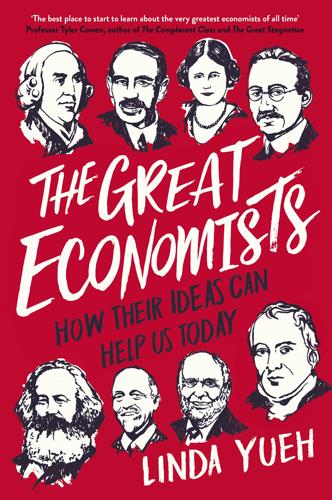
The Great Economists: How Their Ideas Can Help Us Today
by
Linda Yueh
Published 15 Mar 2018
But, a number of governments use tariffs to protect their industries from competition from bigger global rivals until they are more mature. Labour groups also want protection for domestic jobs. So, tariffs are more than just an economic decision to impose a tax. There are often political motives behind their imposition. There are also non-tariff barriers (NTBs) to add to the mix. These are the other ways to be protectionist without imposing tariffs, such as through insisting on standards for certain industries that can restrict imports. For instance, Thai prawn exporters found it hard to meet American standards for the type of net that allowed them to sell to the US.

Democracy and Prosperity: Reinventing Capitalism Through a Turbulent Century
by
Torben Iversen
and
David Soskice
Published 5 Feb 2019
In addition to these domestic political-institutional conditions, the international trade and monetary regime gave governments an important measure of fiscal and monetary policy autonomy by cushioning currencies against speculative attacks and by permitting governments to restrict and direct the international flow of capital. Likewise, GATT only brought down trade barriers slowly and allowed many exemptions to help European countries build their own industries (Ruggie 1983). Non-tariff barriers were particularly dense in services where European governments argued that special considerations—such as financial stability, an encompassing system of public transportation, and country-wide postal service—justified heavy state regulation and exclusion of foreign competition. Public utilities were widely considered natural monopolies that required state ownership or tight regulatory control, and in areas such as telecommunication and postal services there was also arguably a national-security interest in keeping foreign firms at bay.

Makers and Takers: The Rise of Finance and the Fall of American Business
by
Rana Foroohar
Published 16 May 2016
The idea behind that Reagan administration effort, known as Project Socrates, was to figure out why America’s foreign competitors were succeeding in establishing highly efficient, thriving corporations while their US counterparts were withering. The team found that foreign firms based in Japan, France, Germany, and other developed countries enjoyed a wide spectrum of advantages that allowed them to trounce US companies: government assistance, generous subsidies, R&D initiatives, industrial intelligence gathering, and unofficial non-tariff barriers. The project’s mission was to then map out a strategy of industrial and technological development that would allow the United States to close the gap.40 The effort was shut down under the Bush administration, but it’s a battle that is in many ways still being fought. It is also one that, ironically, brings together political forces from both sides of the aisle.
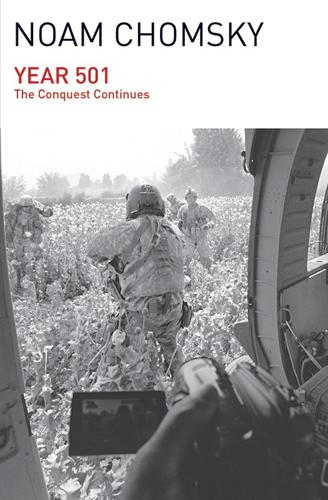
Year 501
by
Noam Chomsky
Published 19 Jan 2016
He might have added the World Bank report that the protectionist measures of the industrial countries reduce national income in the South by about twice the amount provided by official, largely export-promotion, most of it to the richer sectors of the “developing countries” (less needy, but better consumers). Or the UNCTAD estimate that non-tariff barriers (NTBs) of the industrial countries reduce Third World exports by almost 20 percent in affected categories, which include textiles, steel, seafood, animal feed and other agricultural products, with billions of dollars a year in losses. Or the World Bank estimate that 31 percent of the South’s manufacturing exports are subject to NTBs as compared with the North’s 18 percent.

Adam Smith: Father of Economics
by
Jesse Norman
Published 30 Jun 2018
First, Smith’s economic egalitarianism anticipates recent academic work which suggests that great inequality, far from creating incentives that boost economic growth, can actively undermine it. Secondly, Smith underlines the degree to which different forms of modern mercantilism—the strategic use of trade surpluses and tariff and non-tariff barriers, the hollowing out of labour markets in developing countries as their most mobile talent is drawn into advanced economies, the competitive withdrawal by nations from shared environmental costs—can be read not merely in terms of a retreat from the responsibilities of a globalizing world but as the plain old-fashioned pursuit of political power by a form of economic nationalism, a modern ‘jealousy of trade’, in Hume’s memorable phrase.

Inflated: How Money and Debt Built the American Dream
by
R. Christopher Whalen
Published 7 Dec 2010
In simple terms, the United States dropped most of its protectionist import barriers while allowing Germany, Korea and Japan to protect their markets. These nations used very similar trade barriers to those the United States had employed prior to 1945. The United States embraced free trade, at least to a degree, but encouraged its former enemies to rebuild their economies behind a protective wall of tariff and non-tariff barriers and quotas. The Bretton Woods Agreement of 1944 and the multilateral trade framework created under the auspices of the United States essentially allowed the participating nations to peg their currencies to the dollar and direct their attention and resources to domestic economic recovery. By basing the post-war world on the dollar and gold, the Allies sought to avoid competitive currency devaluations between nations and thereby sidestep the sharp swings in growth and reserve balances that had characterized the pre-WWII period.

Good Economics for Hard Times: Better Answers to Our Biggest Problems
by
Abhijit V. Banerjee
and
Esther Duflo
Published 12 Nov 2019
Philippe Aghion and Stephen Durlauf (Amsterdam: North Holland, 2005), vol. 1, part A: 473–552. 28 Topalova, “Factor Immobility and Regional Impacts of Trade Liberalization.” 29 Pinelopi K. Goldberg, Amit K. Khandelwal, Nina Pavcnik, and Petia Topalova, “Multiproduct Firms and Product Turnover in the Developing World: Evidence from India,” Review of Economics and Statistics 92, no. 4 (2010): 1042–49. 30 Robert Grundke and Cristoph Moser, “Hidden Protectionism? Evidence from Non-Tariff Barriers to Trade in the United States,” Journal of International Economics 117 (2019): 143–57. 31 World Trade Organization, “Members Reaffirm Commitment to Aid for Trade and to Development Support,” 2017, accessed March 18, 2019, https://www.wto.org/english/news_e/news17_e/gr17_13jul17_e.htm. 32 David Atkin, Amit K.
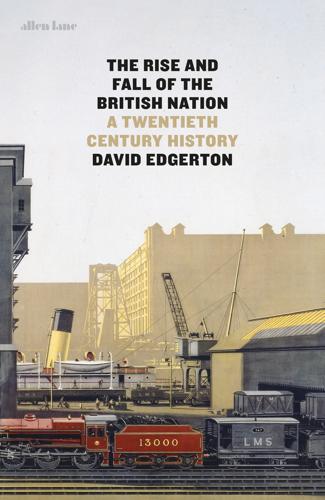
The Rise and Fall of the British Nation: A Twentieth-Century History
by
David Edgerton
Published 27 Jun 2018
But the European Union, as the new body was called following the Treaty on European Union (the Maastricht Treaty of 1992), was very much larger than the EEC the United Kingdom joined. Greece (1981), Spain, Portugal (1986), Sweden, Finland and Austria (1992) had joined, as well as the former GDR (1990). The 1986 Single European Act, strongly supported by the Conservative government, aimed to remove all sorts of non-tariff barriers within the expanding Community, changes which came into full effect in 1992. These were transformative developments leading to a radical liberalization of European trade, in the context of more liberalized global trade. From 1992, trade within the European Union was as free as it was previously within national economies.
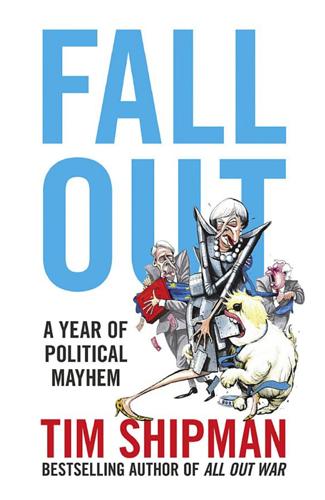
Fall Out: A Year of Political Mayhem
by
Tim Shipman
Published 30 Nov 2017
Some civil servants believed that Fox’s focus on trade tariffs – and his belief that a trade deal with the EU would be the ‘easiest in the world’ – was missing the point, since the real problems were encountered trying to secure a deal on services, where the refusal to recognise professional qualifications and other non-tariff barriers were more significant. ‘It’s not all about tariffs,’ a senior mandarin said. ‘Liam believes you just unilaterally disarm and then take all your tariffs down.’ Ivan Rogers also warned Downing Street that the belief of Brexiteers that they could just walk away from the EU with no deal and keep trading on the same terms if neither side erected tariffs was incorrect.